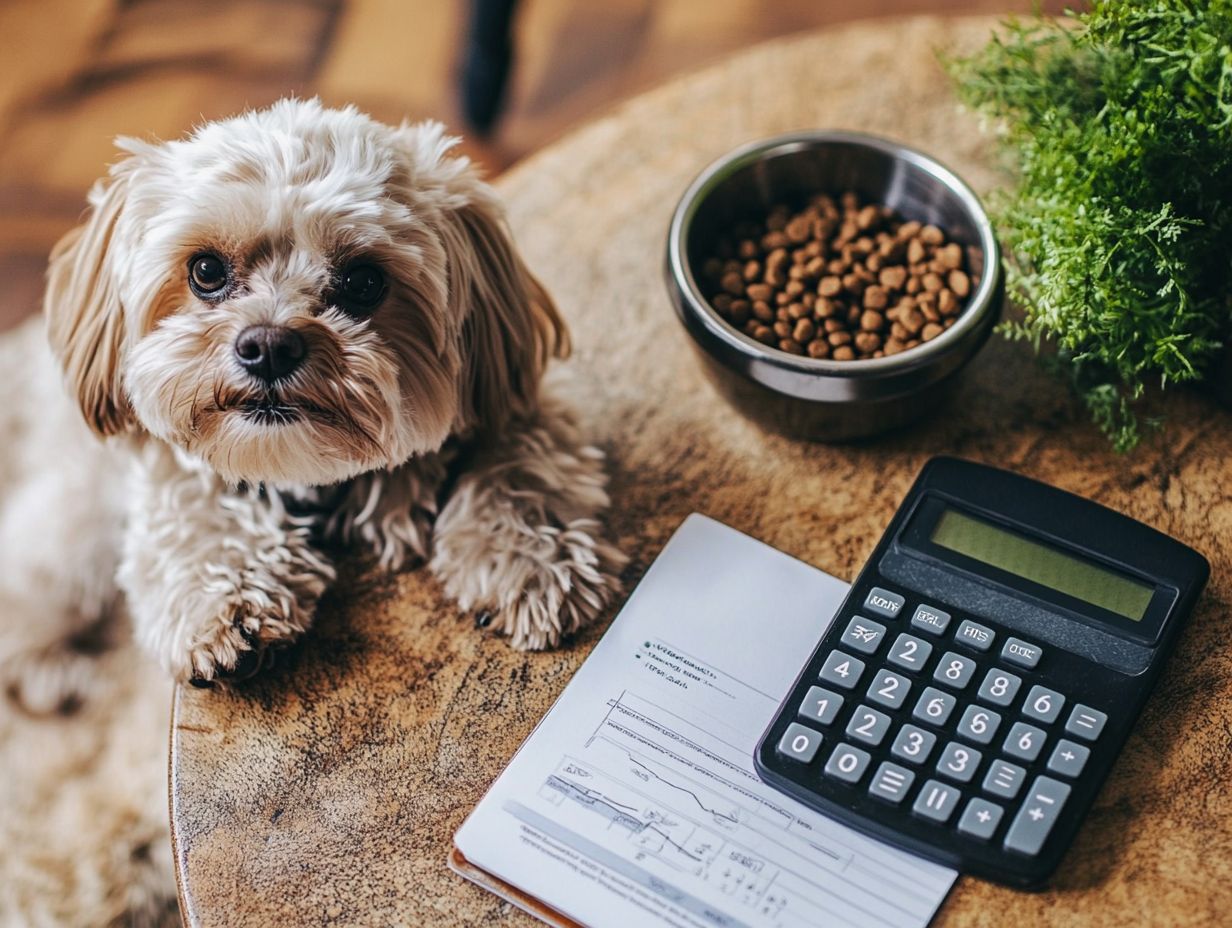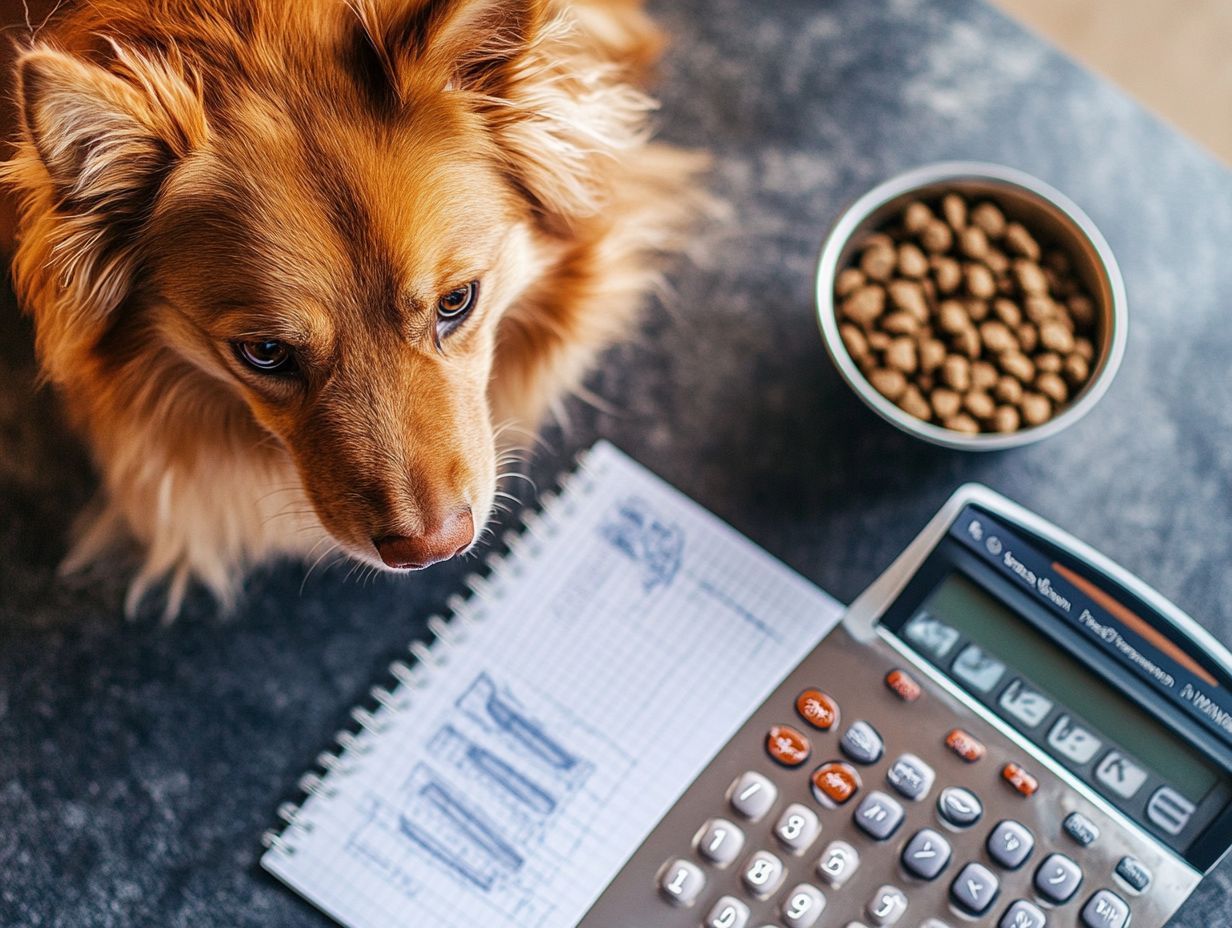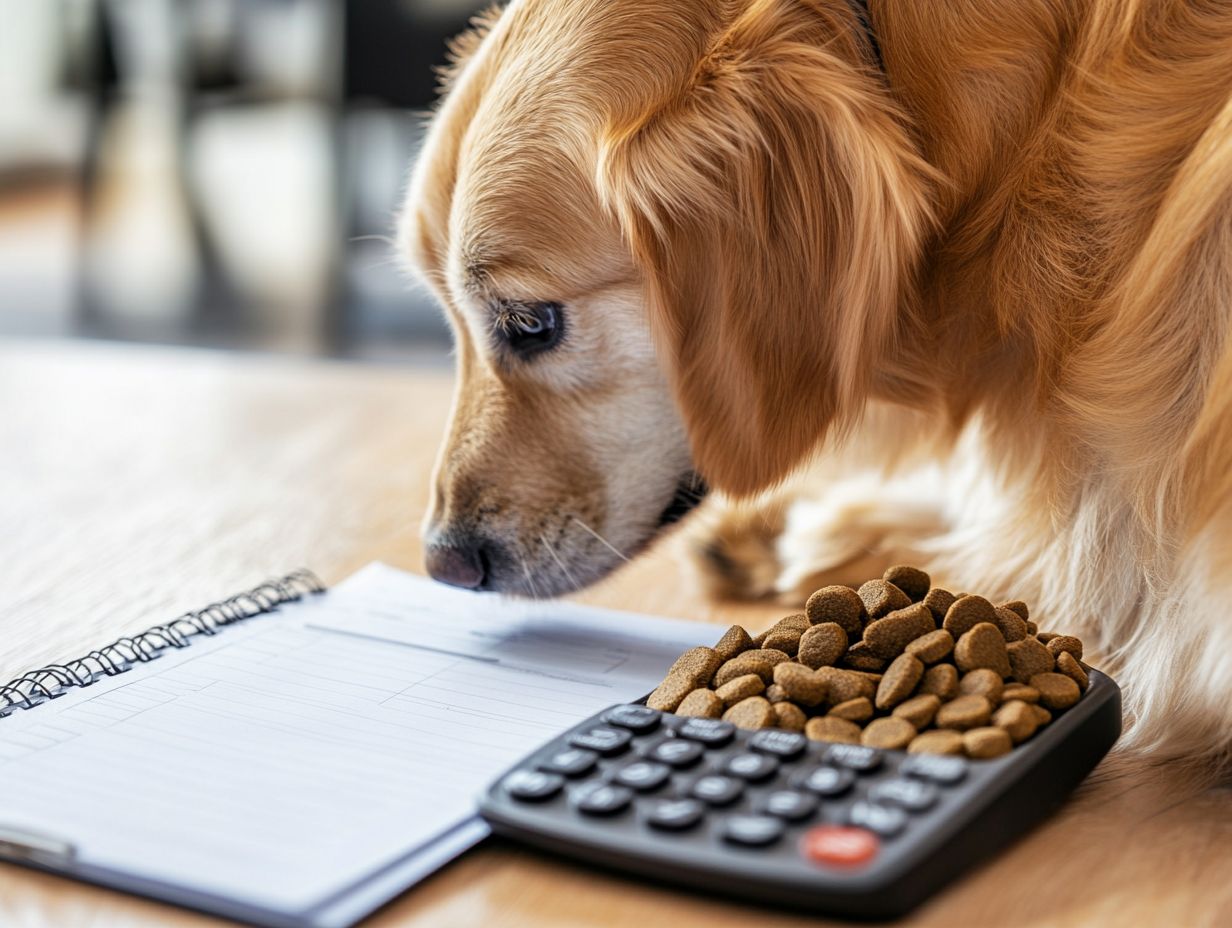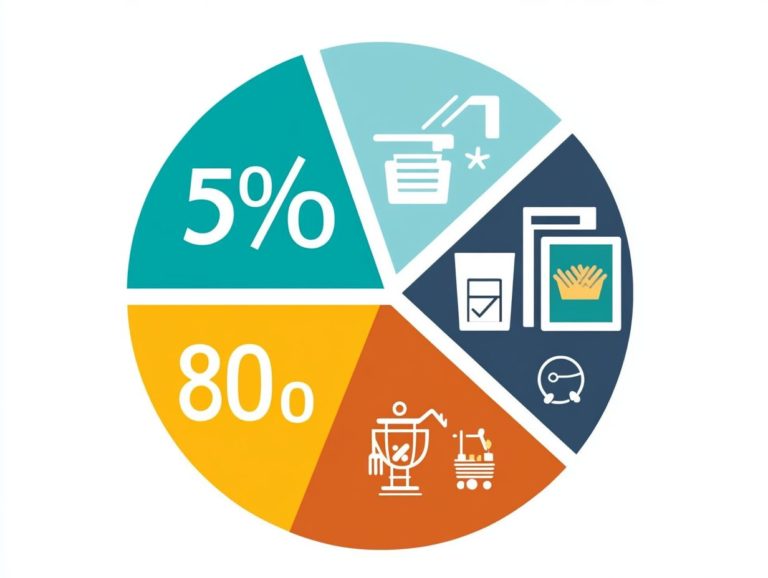Budgeting for Pets: Costs to Consider
Owning a pet can be one of life s most fulfilling experiences, yet it also entails a significant financial commitment associated with pet ownership.
From initial expenses like adoption fees to ongoing costs for food and veterinary care, understanding the true cost of pet ownership is essential for any responsible pet parent.
This article explores the various aspects of budgeting for your beloved companion, covering everything from pet food expenses to grooming and dog training. You will also find tips to help you save money without skimping on care.
Get ready to navigate the financial landscape of pet ownership with confidence and clarity!
Contents
- Key Takeaways:
- The True Cost of Owning a Pet
- Budgeting for Pet Food
- Factors Affecting Food Costs
- Veterinary Expenses
- Routine Care vs. Emergency Visits
- Other Considerations for Pet Budgeting
- Grooming, Training, and Other Expenses
- Ways to Save on Pet Expenses
- Frequently Asked Questions
- What are the initial costs of pet ownership to consider when budgeting for a new pet?
- What ongoing expenses should I factor into my pet budget?
- How can I save money on pet expenses?
- What are some unexpected costs to consider when budgeting for a pet?
- How can I make sure I am prepared to budget for a pet?
- What are some ways to cut costs on pet care without sacrificing quality?
Key Takeaways:

- Owning a pet comes with both initial and ongoing expenses, from adoption fees to food and veterinary care.
- Pet food costs, including dog food and cat food, are influenced by factors like size and breed and should be factored into your overall budget.
- Routine veterinary care is essential for your pet’s health, but emergency visits can also impact your budget. Consider savings options and budget for both types of care.
The True Cost of Owning a Pet
Understanding the true cost of owning a pet goes far beyond that initial adoption fee; it includes a range of ongoing expenses that shape the entire pet ownership experience.
These costs can vary significantly based on whether you choose a dog or a cat, covering essential aspects of care such as food, grooming, medical bills, and preventative care, which helps keep your pet healthy before they get sick.
The emotional support your pet provides and their lifestyle play a critical role in your budgeting. It s vital for prospective adopters like you to fully understand these financial obligations before welcoming a pet into your home.
Initial Expenses
The initial costs of pet ownership can be quite high, especially when you’re bringing home your first furry companion. You’ll encounter adoption fees, essential supplies, and that important initial stock of pet food right away.
Besides these primary expenses, it s wise to factor in other necessary items like collars, leashes, grooming tools, and those crucial veterinary check-ups, which are key for giving your new pet a healthy start in life.
While the excitement of welcoming a new pet into your home is palpable, understanding the financial commitment involved is key to responsible ownership. These early investments create a nurturing environment and establish a solid foundation for the ongoing care and well-being of your pet throughout their life.
What to Expect: Ongoing Expenses
The ongoing costs of pet ownership are an essential factor you must consider. This includes monthly expenses for pet food, grooming, medical care, and even pet insurance to ensure your pet’s well-being.
These costs can accumulate quickly, making it crucial for you to establish a well-thought-out budget. Regular veterinary check-ups, vaccinations, flea and tick treatments, and unforeseen medical emergencies can significantly impact your overall expenses for keeping your pet healthy.
Grooming needs, which vary by breed, may require either professional dog grooming services or at-home maintenance, both of which should be included in your financial plan.
Additionally, pet accessories, toys, and even training classes can greatly enhance your pet s quality of life and safety, underscoring the importance of thorough financial consideration.
Budgeting for Pet Food

Budgeting for pet food is a crucial responsibility that every pet owner must embrace. It directly impacts not only the health of your beloved companions but also the overall costs associated with their care.
To make the best choices, you need to thoughtfully consider various factors, including the type of food, its quality, and the delivery methods. Whether you’re selecting dog food, cat food, or other nutritious options for your furry friends, like pet subscription services, your choices matter.
Factors Affecting Food Costs
Several factors influence pet food costs. Understanding these can help you make informed decisions about your pet’s nutritional needs.
For instance, the type of food you choose plays a significant role. Specialized diets for cats often cost more than general dog food due to different nutritional requirements.
The quality of ingredients also impacts the cost significantly. Grain-free or organic options often come with a higher price tag.
Brand reputation is another important factor. Premium brands may charge more because of their extensive research and development.
If your pet has specific health conditions, they may need special food prescribed by your vet, which can increase food expenses. Responsible pet owners must carefully consider these factors when planning their pet food budget.
Veterinary Expenses
Veterinary expenses are a crucial part of pet ownership, covering regular checkups and necessary medical care. As a responsible pet owner, you ll invest in preventive care and consider options like pet insurance.
Prioritizing your pet’s health ensures their well-being and helps you manage costs effectively.
Routine Care vs. Emergency Visits
Recognizing the difference between routine veterinary care and emergency visits is essential. Routine care includes regular checkups and preventive measures, while emergency visits can lead to high costs.
Routine care typically involves vaccinations, dental cleanings, and w wellness exams. These services help catch health issues early and maintain your pet’s overall well-being.
Emergency visits often result from sudden injuries or severe illnesses. They require immediate attention and can result in costly treatments.
By emphasizing preventive care, you not only keep your furry friend happy but also reduce the risk of unexpected bills. A balanced approach to both routine and emergency services ensures a healthier pet and gives you greater peace of mind.
Other Considerations for Pet Budgeting

When budgeting for pets, consider more than just food and veterinary care. A complete approach includes various pet-related expenses, like grooming, training, toys, and even boarding options.
All these factors contribute to your pet’s overall wellness and happiness for a fulfilling life.
Grooming, Training, and Other Expenses
Grooming, training, and other expenses are key parts of pet ownership. They include services and products vital for your pet’s well-being and emotional support.
These expenses reflect your commitment to creating a nurturing and joyful environment for your furry friend. Regular grooming keeps your pet’s coat and skin healthy and strengthens your bond through effective training, promoting positive behavior.
Investing in high-quality toys and supplies like chew toys and interactive games is essential for your pet’s mental stimulation. This engagement vital for emotional health fosters happiness and resilience in daily challenges.
Ways to Save on Pet Expenses
Finding ways to save on pet expenses is important for you as a pet owner. By using effective budgeting strategies and smart savings hacks, you can ease your financial burden.
Explore options like veterinary discounts, investing in pet insurance, or using services like auto-ship for pet supplies. These strategies ensure your furry friends get the care they deserve without breaking the bank.
Tips for Cutting Costs
Using smart ideas for cutting costs can help you manage pet expenses. This includes choosing affordable pet food and supplies while making savvy grooming choices.
As a pet owner, you know expenses can add up quickly. With some thoughtful adjustments, you can stick to your budget without sacrificing quality.
Start by researching bulk purchasing options for pet food and treats. This simple step can significantly lower your weekly costs.
Choosing high-quality, balanced diets not only supports long-term health but also reduces unwanted vet visits due to food problems.
For supplies, consider DIY projects like making toys from everyday items. Check local consignment shops for gently used treasures.
Grooming can become a financial burden. Learn basic grooming techniques for your pet or set up regular self-grooming sessions.
Explore community resources that can help! Local pet charities often offer low-cost clinics and pet supply giveaways, easing financial pressure while ensuring your pets get the care they deserve.
Frequently Asked Questions

What are the initial costs of pet ownership to consider when budgeting for a new pet?
When bringing a new pet home, you need to consider initial costs like adoption fees, spaying or neutering, and vaccinations. These costs vary based on the type of pet and your location.
What ongoing expenses should I factor into my pet budget?
Budget for ongoing pet-related expenses, including dog food, cat food, pet toys, grooming, and annual vet check-ups. Don’t forget about potential emergency medical expenses.
How can I save money on pet expenses?
Shop around for the best deals on supplies and services to save money. Consider generic brands instead of name brands and use coupons or loyalty programs like EveryDollar and stores like Costco and Sam s Club.
What are some unexpected costs to consider when budgeting for a pet?
Unexpected costs can include unforeseen medical expenses, pet-sitting or boarding fees, and damage to your home. It’s crucial to have an emergency fund for these situations.
How can I make sure I am prepared to budget for a pet?
Before bringing a new pet home, research and create a pet budget that accounts for all potential expenses. Also, consider the time and effort needed to care for a healthy pet.
What are some ways to cut costs on pet care without sacrificing quality?
Learn to groom your dog or cat at home instead of paying for a professional service. You can find grooming tools at pet stores or online retailers like Chewy.
Ask your vet about saving on vaccinations and medications, and think about getting pet insurance for unexpected medical expenses. Consider adopting your first pet from an animal shelter instead of buying from a breeder; adoption fees are usually much lower.






